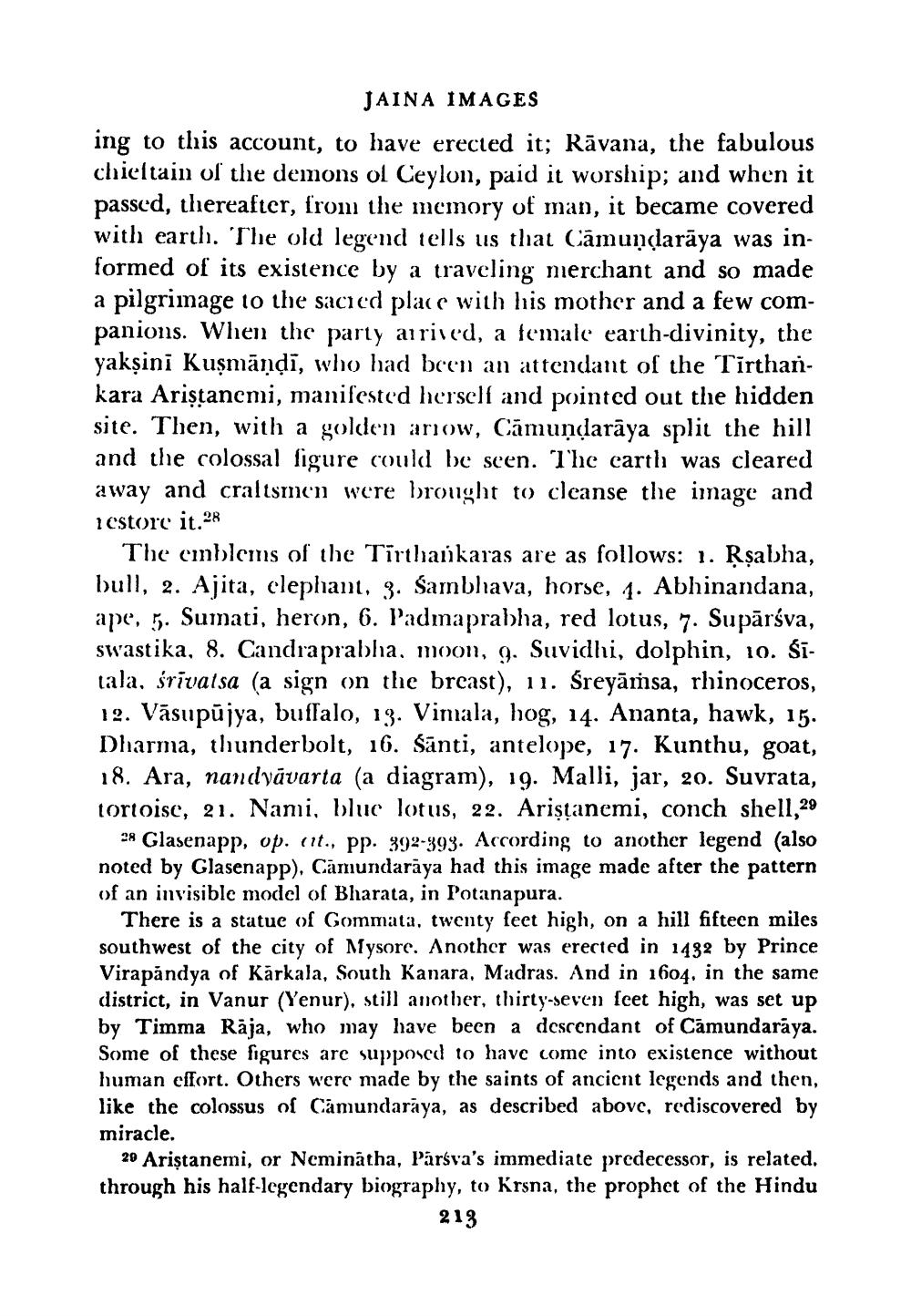________________
JAINA IMAGES
ing to this account, to have erected it; Rāvana, the fabulous chieltain of the demons of Ceylon, paid it worship; and when it passed, thereafter, from the memory of man, it became covered with earth. The old legend tells us that Cāmundarāya was informed of its existence by a traveling merchant and so made a pilgrimage to the sacıcd place with his mother and a few companions. When the party arrived, a female earth-divinity, the yakșini Kuşmāndi, who had been an attendant of the Tirthankara Aristancmi, manifested herself and pointed out the hidden site. Then, with a golden ariow, Cāmundarāya split the hill and the colossal figure could be seen. The carth was cleared away and craltsmen were brought to cleanse the image and restore it.28
The emblems of the Tirthaikaras are as follows: 1. Rşabha, bull, 2. Ajita, clephant, 3. samblava, horse, 4. Abhinandana, ape, 5. Sumati, heron, 6. Padmaprabha, red lotus, 7. Supārsva, swastika, 8. Candraprabha, moon, 9. Suvidhi, dolphin, 10. ŚiLala, srivatsa (a sign on the breast), 1. Śreyāmsa, rhinoceros, 12. Vāsupujya, buffalo, 13. Vimala, hog, 14. Ananta, hawk, 15. Dharma, thunderbolt, 16. śānti, antelope, 17. Kunthu, goat, 18. Ara, nandyāvarta (a diagram), 19. Malli, jar, 20. Suvrata, tortoise, 21. Nami, blue lotus, 22. Aristanemi, conch shell,29 28 Glasenapp, op. (it., pp. 392-393. According to another legend (also
by Glasenapp), Camundaraya had this image made after the pattern of an invisible model of Bharata, in Potanapura.
There is a statue of Gommata, twenty feet high, on a hill fifteen miles southwest of the city of Mysore. Another was erected in 1482 by Prince Virapandya of Kārkala, South Kanara, Madras. And in 1604, in the same district, in Vanur (Yenur), still another, thirty-seven (cet high, was set up by Timma Raja, who may have been a descendant of Cāmundarāya. Some of these figures are supposed to have come into existence without human effort. Others were made by the saints of ancient legends and then, like the colossus of Cámundarāya, as described above, rediscovered by miracle.
20 Aristanemi, or Neminātha, Pārsva's immediate predecessor, is related. through his half-legendary biography, to Krsna, the prophet of the Hindu
213




